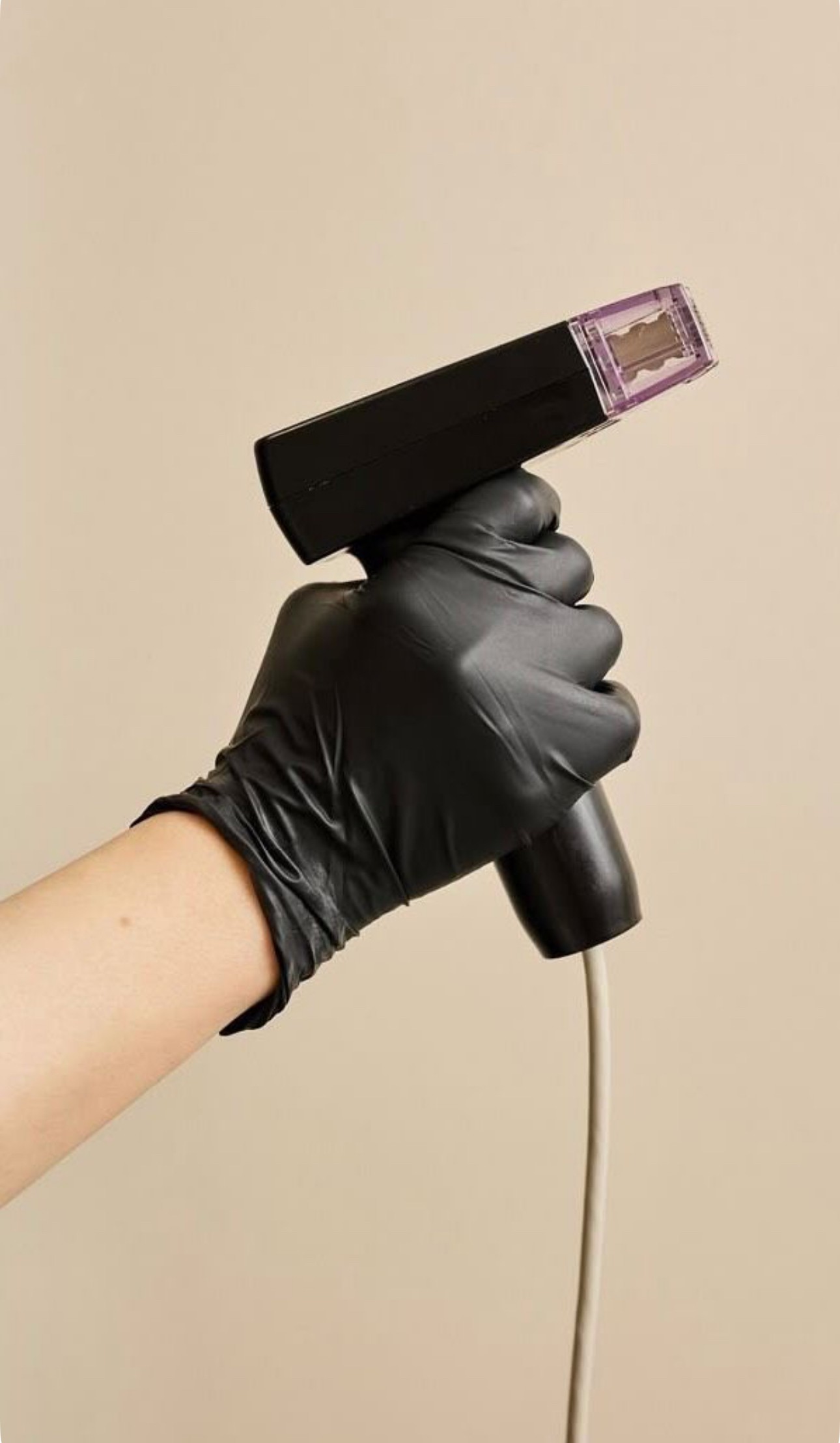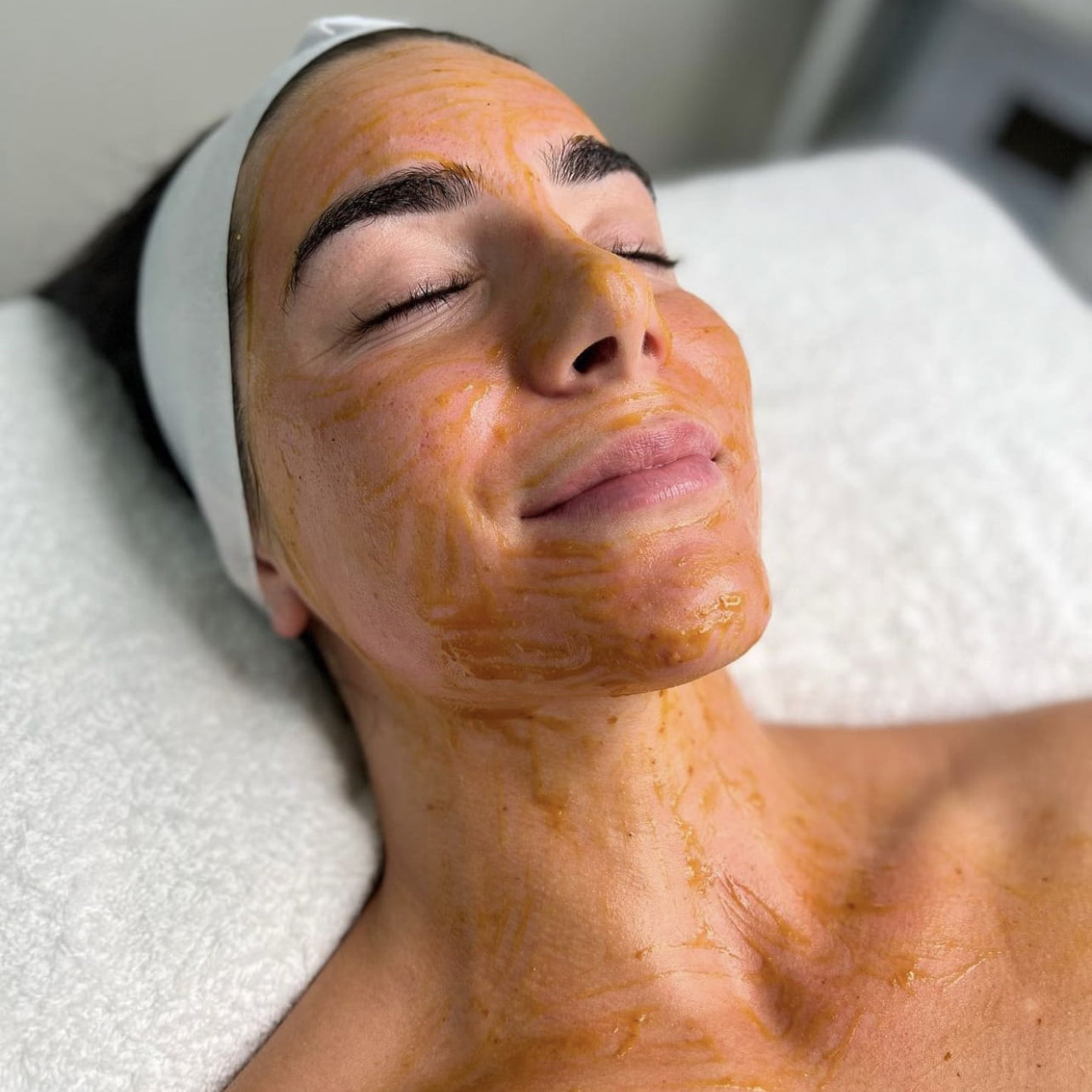
🏆 Awarded Acne Clinic & Clinician of the Year – 2024 & 2025 🏆
🏆 Awarded Acne Clinic & Clinician of the Year – 2024 & 2025 🏆

Choosing between a chemical peel, microdermabrasion, and HydraFacial can feel overwhelming. Each facial treatment promises to transform your skin, but they work in distinctly different ways. If you’re struggling with dull skin, acne, fine lines, or hyperpigmentation, understanding which treatment aligns with your skin concerns is crucial. At Melbourne Skin Clinic, we’ve helped countless clients navigate these options to achieve luminous, healthy skin. This comprehensive guide breaks down the differences between the two—or rather, three—most popular exfoliation treatments, allowing you to make an informed decision about which one is right for your unique skin type and goals.
Exfoliation is the process of removing dead skin cells from the outermost layer of your skin. As we age, our natural cell turnover slows down, resulting in a buildup of impurities and dead cells that can cause our complexion to appear dull and uneven. Professional exfoliation treatments accelerate this process, revealing fresher, brighter skin underneath.
When you exfoliate the top layer of your skin effectively, you:
While at-home scrubs and acids can help maintain results, professional treatments penetrate multiple layers of skin more effectively, delivering transformative results that skincare products alone cannot achieve.
Professional facial treatments are ideal if you’re dealing with:
If your home care routine isn’t delivering the results you want, it may be time to consider a minimally invasive treatment that uses advanced technology to address the deeper dermal layer. However, it’s essential to set realistic expectations—most concerns require multiple treatments spaced over several weeks or months to achieve optimal results.
A chemical peel uses a solution of acids applied to the skin’s surface to create controlled exfoliation. The chemical peel uses various acid formulations to remove dead skin cells and damaged outer layers, prompting your skin to regenerate with fresh, healthy cells.
Acid Types Available:
Chemical peels range from superficial (affecting only the stratum corneum) to medium-depth (penetrating into the papillary dermis), with stronger peels producing more dramatic but also more noticeable downtime.
Chemical peel treatments excel at addressing:
For severe pigmentation issues like melasma, Melbourne Skin offers advanced options, such as Cosmelan and Dermamelan depigmentation treatments, which provide even more intensive results with an 87% success rate.
Understanding what happens during a peel helps reduce anxiety about the treatment:
Timeline for Results:
Results typically last 3-6 months, with optimal outcomes achieved through a series of 3-6 treatments spaced 4-6 weeks apart initially, then maintained quarterly.
Downtime Considerations:
Chemical peels aren’t suitable for everyone. Contraindications include:
Microdermabrasion is a non-invasive mechanical exfoliation technique that uses abrasive technology to gently remove the outer layer of dead skin cells. Unlike dermaplaning (which uses a blade) or chemical peels (which use acids), microdermabrasion treatment uses either fine crystals or a diamond-tip wand combined with vacuum suction to physically buff away the stratum corneum.
How It Works:
Microdermabrasion has been around for decades and remains popular because it’s gentle, effective, and requires minimal downtime—making it an excellent entry-level treatment for those new to professional skincare.
Microdermabrasion works best for surface-level concerns:
While effective for maintenance and mild concerns, microdermabrasion doesn’t penetrate as deeply as chemical peels, making it less suitable for significant acne, deep wrinkles, or stubborn hyperpigmentation.
A typical microdermabrasion session follows this flow:
Sessions typically last 30-45 minutes and feel similar to a deep cleansing facial with more vigorous exfoliation.
What to Expect:
Downtime: Microdermabrasion offers one of the biggest advantages—virtually no downtime. You can return to work immediately, apply makeup within hours, and resume normal activities right away. This makes it ideal for busy professionals or anyone seeking gradual improvement without disrupting their social life.
For optimal results, treatments are recommended every 2-4 weeks initially, followed by monthly maintenance.
Microdermabrasion is particularly well-suited for:
Microdermabrasion has minimal contraindications, though it should be avoided if you have active acne, rosacea flare-ups, or extremely thin skin.
The HydraFacial is a patented multi-step treatment that combines cleansing, exfoliation, extraction, hydration, and antioxidant protection—all in one session. Unlike traditional facials that use manual extraction and basic products, the HydraFacial device uses vortex technology to infuse the skin with intensive serums while simultaneously extracting impurities.
The HydraFacial MD Technology: A HydraFacial uses a vacuum-like tip with spiralized edges to create a vortex effect that:
At Melbourne Skin, we offer bespoke HydraFacials tailored to your specific needs, incorporating lymphatic drainage, vitamin infusion, and LED therapy for comprehensive skin rejuvenation.
The HydraFacial treatment addresses a variety of benefits:
Because the treatment combines exfoliation with deep hydration, it’s particularly effective for those whose skin needs both cleansing and nourishment—a common combination that’s difficult to address with other single-modality treatments.
The signature HydraFacial follows a systematic three-step approach:
Step 1: Cleanse + Peel
Step 2: Extract + Hydrate
Step 3: Fuse + Protect
Melbourne Skin Customisations: Our bespoke HydraFacials can include additional enhancements:
Immediate Results: The HydraFacial is famous for its instant gratification—you’ll see results the moment you look in the mirror after treatment:
Zero Downtime: This is one of the biggest advantages. Unlike chemical peels or more aggressive treatments, HydraFacial has:
Longevity: Results typically last 5-7 days to one month, depending on your skincare routine and skin condition. For sustained results, monthly treatments are recommended as part of your maintenance regimen.
The HydraFacial suits virtually everyone:
Because it’s a gentle yet effective treatment, the HydraFacial serves as both a standalone solution and an excellent complement to other treatments at Melbourne Skin.
To help you understand the differences between the two—or three—treatments more clearly, here’s a comprehensive comparison:
| Treatment | Depth of Penetration | Mechanism | Intensity Level |
|---|---|---|---|
| Chemical Peel | Epidermis to superficial dermis | Chemical exfoliation via acids | Medium to High |
| Microdermabrasion | Stratum corneum only | Physical abrasion | Low to Medium |
| HydraFacial | Epidermis with serum infusion | Vortex technology + hydration | Low to Medium |
Which Penetrates Deepest? Chemical peels create the most significant controlled injury to multiple layers of skin, triggering the most dramatic regeneration response. Microdermabrasion and HydraFacial primarily work on the surface layers, making them gentler but less transformative for addressing deeper concerns.
Understanding recovery time is crucial for planning your treatment:
| Treatment | Immediate Effect | Downtime Duration | Social Downtime |
|---|---|---|---|
| Chemical Peel | Slight redness, tightness | 3-7 days peeling | 5-7 days before major events |
| Microdermabrasion | Pink glow | 1-2 hours pinkness | None |
| HydraFacial | Immediate radiance | Zero | None |
The Downtime Factor:
| Treatment | Initial Results | Peak Results | Duration of Results | Frequency Needed |
|---|---|---|---|---|
| Chemical Peel | Day 7-10 | Week 2-4 | 3-6 months | Every 4-6 weeks initially, then quarterly |
| Microdermabrasion | Immediate | 24-48 hours | 2-4 weeks | Every 2-4 weeks |
| HydraFacial | Immediate | Same day | 5-7 days to 1 month | Monthly maintenance |
Long-term Cumulative Effects: All three treatments show improved results with consistent sessions. However, chemical peels tend to create the most lasting transformation in skin quality, while microdermabrasion and HydraFacial excel at maintaining and preventing skin issues.
Comfort during treatment varies significantly:
Chemical Peel:
Microdermabrasion:
HydraFacial:
If you’re anxious about pain, the HydraFacial offers a more comfortable experience, while chemical peels require a higher tolerance for temporary discomfort.
Are you unsure which treatment best aligns with your specific needs? Here’s guidance based on common skin concerns:
Best Option: Chemical Peels (Salicylic Acid)
Why it works:
Alternative: HydraFacial with Extractions
Treatment Strategy: Begin with a series of salicylic acid peels every 4 weeks, followed by monthly HydraFacials to maintain results. For severe acne scarring, consider upgrading to skin needling treatments for collagen remodelling.
Best Option: Chemical Peels (Retinoid, Lactic Acid)
Why it works:
Alternative: Series of Microdermabrasion
When to Upgrade: If fine lines and wrinkles are moderate to severe, or if you’re experiencing significant volume loss, consider advancing to more advanced options, such as Morpheus8 radiofrequency microneedling, Rejuran polynucleotide injections, or dermal fillers—all available at Melbourne Skin.
Best Option: HydraFacial
Why it works:
Gentle Chemical Peel Alternative:
Avoid: Aggressive microdermabrasion on very sensitive or rosacea-affected areas, as mechanical abrasion can trigger inflammation and redness.
Best Option: Chemical Peels
Why it works:
For severe cases, melasma, post-inflammatory hyperpigmentation, and stubborn sun damage may require advanced depigmentation peels, such as Cosmelan ($1,800) or Dermamelan ($2,200), which have an 87% success rate.
Supporting Treatments:
Why Microdermabrasion May Not Be Enough: Surface-only exfoliation doesn’t address pigment in deeper layers. While microdermabrasion can brighten overall tone, it won’t significantly fade established hyperpigmentation.
Start With: HydraFacial or Gentle Microdermabrasion
Why this approach makes sense:
Building Up to Chemical Peels: Once you’re comfortable with professional treatments and understand your skin’s response, you can graduate to chemical peels for more dramatic results. Many clients start conservatively and become more adventurous as they see benefits.
Consultation Importance: Melbourne Skin’s $150 consultation (redeemable on treatments) includes advanced skin analysis that identifies your specific concerns and recommends the optimal starting point—whether that’s gentle hydration, moderate exfoliation, or intensive resurfacing.
Absolutely—in fact, a strategic combination often produces the best results. However, timing and sequencing matter:
Safe Combinations:
✅ HydraFacial between Chemical Peels
✅ Microdermabrasion as Preparation
✅ Alternating Monthly Treatments
Combinations to Avoid:
❌ Chemical Peel + Microdermabrasion in Quick Succession
❌ Multiple Aggressive Treatments in One Session
Avoiding Over-Exfoliation: Signs you’ve overdone it include:
Your Melbourne Skin clinician will design a treatment calendar that balances effectiveness with skin health, ensuring you achieve results without compromising your skin barrier.
For immediate visible results: HydraFacial wins—you’ll see plumper, more radiant skin the moment treatment ends, making it the ideal “red carpet” facial treatment.
For dramatic transformation, chemical peels provide the most significant improvement. However, you’ll need to wait 7-10 days for the peeling to complete and the results to fully emerge.
For gradual improvement, microdermabrasion offers a subtle enhancement that builds with each session—great for those who prefer a slow-and-steady approach without dramatic changes.
Timing is crucial when you have an important occasion approaching:
HydraFacial: 1-2 days before
Microdermabrasion: 3-5 days before
Chemical Peel: 2-3 weeks before
Pro Tip: Never try a new treatment for the first time right before an event. Always conduct a test session several months in advance to understand your skin’s response.
The Truth About “Best” Treatment: There’s no universal answer to which one is right for your skin—the optimal choice depends on where you are in your skin journey, what you’re trying to achieve, and how your lifestyle accommodates different recovery requirements.
Personalised Choice is Key: Your skin type, specific concerns, tolerance for downtime, budget, and long-term goals all play a role in the decision. This is why professional consultation is invaluable—Melbourne Skin’s advanced analysis and expert assessment remove the guesswork, ensuring you invest in treatments that genuinely deliver.
No One-Size-Fits-All Solution: Many clients discover that a combination approach works best—perhaps quarterly chemical peels for deep renewal, with monthly HydraFacials for maintenance and hydration in between. Your treatment plan should be as unique as your skin.
Book your comprehensive skin consultation at Melbourne Skin Clinic and let our expert team analyse your skin, understand your goals, and create a personalised treatment plan that delivers real results. Professional guidance ensures safe, effective results explicitly tailored to your skin’s needs—because your skin deserves expert care, not guesswork.
Take the first step toward your best skin today. Call 0411 248 184 or visit melbourneskin.com to schedule your consultation.